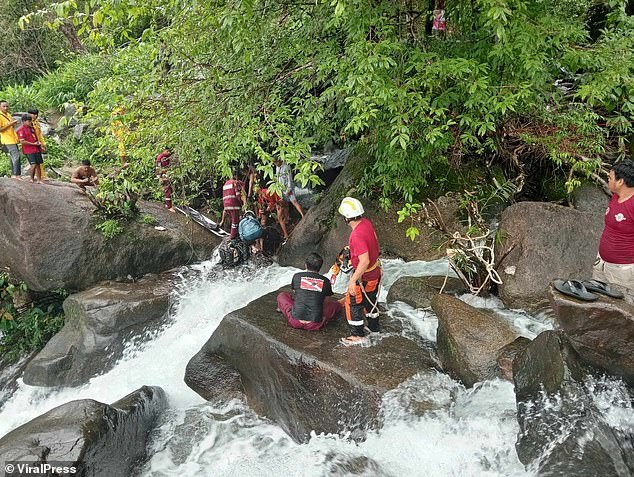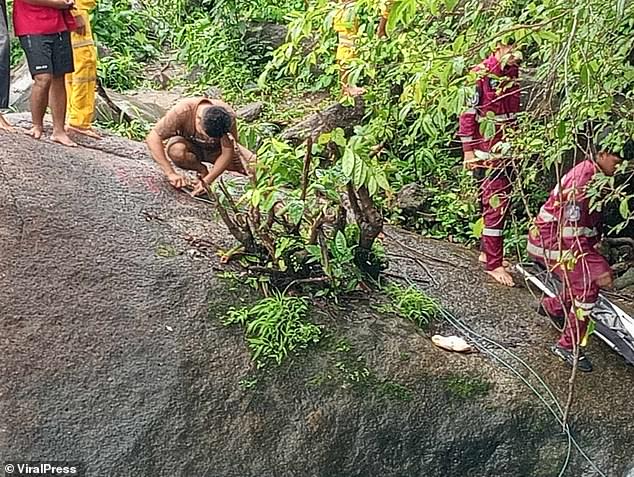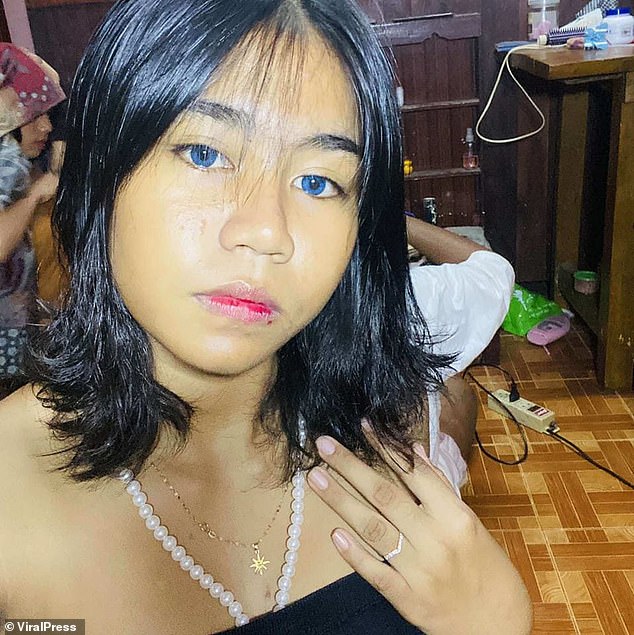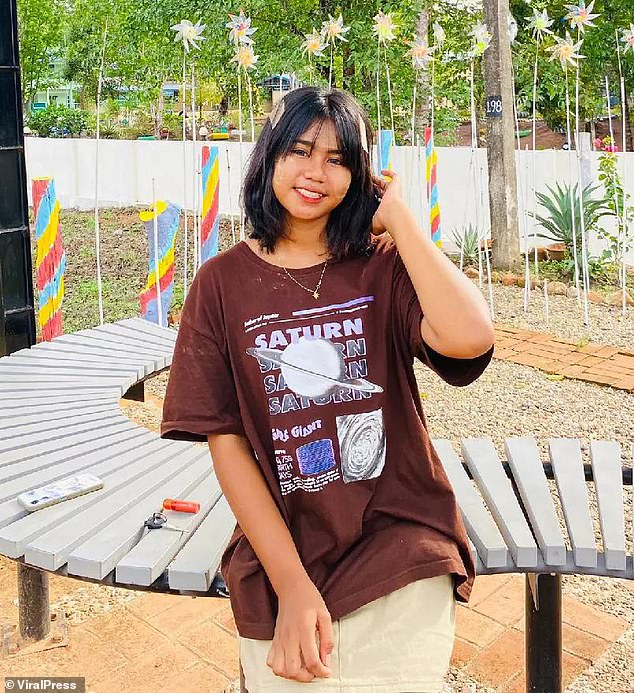Girl, 14, falls to her death taking selfies at the top of a waterfall for her TikTok followers: Teenager is swept away by river and drowns while jammed between two rocks
A young girl died while taking selfies for her TikTok followers at the top of a waterfall. She fell into the waterfall and drowned while trapped between two rocks.
Moe Sa Nay, 14, posed with her friends for photos to share with her 150,000 social media followers when she slipped on wet rocks at Sinywa Waterfall in southeastern Myanmar on July 22.
The girl was swept away by the fast-flowing current and her body became stuck between two large boulders.
Unable to free herself, Nay drowned as floodwaters engulfed her at the popular tourist attraction in Paung town in Mon State.
Rescue workers rushed to the scene but struggled to recover the young man’s body in time.
Moe Sa Nay, 14, died on July 22 while taking selfies at Sinywa Waterfall in southeastern Myanmar after he slipped on wet rocks and fell into the current

Rescue workers pulled the teenager’s lifeless body from between two boulders the next morning

The young girl was swept away by the fast flowing current and her body became trapped between two large boulders
Dramatic footage shows volunteers and firefighters battling to free the lifeless girl’s body from the rocks the next morning, July 23.
They were spotted tying her hands with rope and pulling her out of the narrow opening.
Rescue worker Mon Zaw said: “The one who slipped reached the bottom but died after getting stuck between the rocks.
“She died because she couldn’t get out. They tried to save her, but they couldn’t pull her out. Then the aid agencies and officials came.”
Moe’s body was taken to Paung Township General Hospital for an autopsy.
Her friend, who had also fallen from the falls, was only slightly injured.
This happened after a 39-year-old beautician fell 52 meters in April while taking a selfie from a cliff-top viewing platform.
According to eyewitnesses, Inessa Polenko climbed over a barrier, tripped and fell onto the beach.
Paramedics arrived quickly, but she died in hospital after falling from the Gagry viewpoint in scenic Abkhazia, a breakaway region of Georgia. The viewpoint overlooks the Black Sea.
Also in April, two students from the University of Dundee drowned after falling into a waterfall ‘while trying to take a selfie’.

Nay, who had 150,000 followers on social media, drowned when waters overflowed around her at the popular tourist destination in Paung town in Mon state

The teenager posed for photos with her friend, who also slipped – but only suffered minor injuries
It is believed Jitendranath Karuturi, 26, and Chanhakya Bolisetti, 22, were taking photos at the Linn of Tummel waterfall near Blair Atholl when they slipped and fell into the river.
They were then dragged away, according to a friend who walked with them at the beautiful spot in the Highlands.
Their bodies were recovered by the Scottish Fire and Rescue Service.
This comes after new research suggested that taking selfies should be considered a ‘public health issue’.
Australian academics analysed scientific papers and media reports on injuries and deaths from selfies worldwide since 2008.
They found that nearly 400 reports had been made in the 13 years covered by the study.
The victims were mostly female tourists in their early twenties. Falling and drowning while taking a photo were the two most common causes of death.
Researchers say the public needs to be made aware of the risks of selfies. An estimated 92 million selfies are taken every day worldwide. They also urge social media apps to install software that warns people of the dangers of taking a selfie.
Dr. Samuel Cornell, a risk expert at the University of New South Wales in Australia, and others wrote in the article: “The phenomenon of selfie incidents should be viewed as a public health problem that requires a public health response.
‘Until now, little attention has been paid to preventing selfie incidents through behavior change or direct messaging to users through apps.
While previous research has suggested that selfie zones are unnecessary, and that barriers and signage should be installed to prevent selfie incidents, our results suggest that this may not be sufficient.
‘It may also be wise to send safety messages directly to social media users.’
